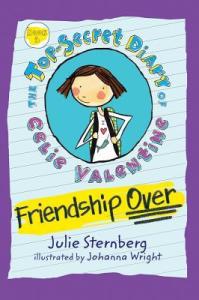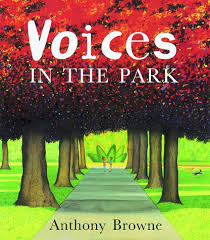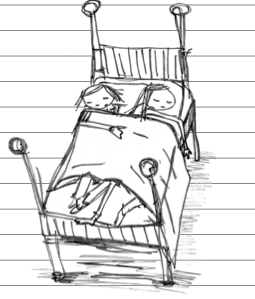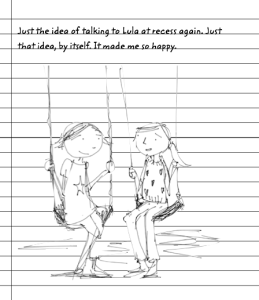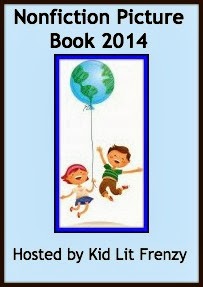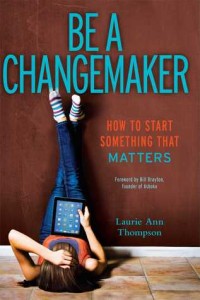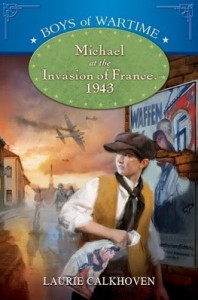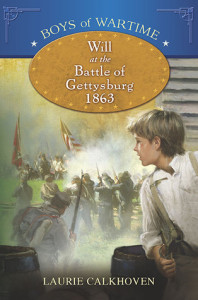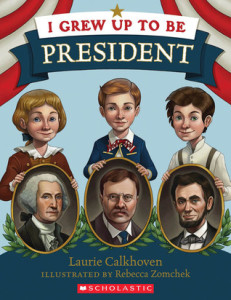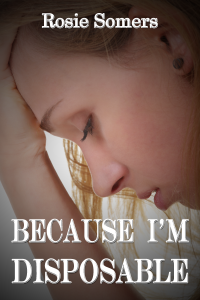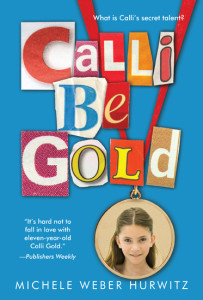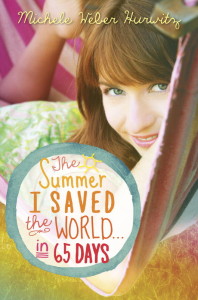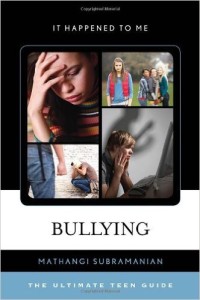The Top-Secret Diary of Celie Valentine: Friendship Over
Author: Julie Sternberg
Illustrator: Johanna Wright
Published October 1st, 2014 by Boyds Mills Press
Goodreads Summary: Ten-year-old Celie has quite a few things on her mind — fights with her sister Jo, secrets at school, an increasingly forgetful grandmother, and worst of all, a best friend who won’t speak to her. How can a girl who hates change survive, when everything in her life is changing? By writing, of course! Celie’s often comical and always heartfelt diary entries include notes, e-mails, homework assignments, and pages from her top-secret spy notebook.
My Review: I am a very big fan of Julie Sternberg’s Eleanor books. What I enjoy the most about these books is that Julie Sternberg has a way to get into 10 year old’s heads and make her narrator’s voice sound so spot on. As someone who teaches middle school, I am always so impressed when a first person narrative sounds like the students I teach. When I found out that Julie Sternberg had a new series coming out and it would be a diary, I was super excited, and this book did not disappoint.
Celie fills her journal with her deepest thoughts, her art, and other items that help tell her story. Readers will connect with Celie while she deals with her grandmother’s declining health, her best friend’s sudden silence, and her older sister’s identity issues. Great discussions will start with questions such as “Have you and your best friend ever gotten into a fight?”
I asked Julie to share with us how she find her inner 10-year-old voice so effectively. Here is her answer:
I’m fixated on voice in writing. It’s problematic. I tend to spend weeks—sometimes months—on the first thirty or so pages of a novel, trying and trying to get the voice right. I cannot move forward until I believe I’ve succeeded.
I recognize that this is a silly way to write. I tell myself, Turn off your internal editor! Knock out a terrible first draft! Revising is so much easier than confronting a blank page. Just KEEP GOING!
But I never can. Because without the right voice, I don’t have a book.
When I think about voice, I think about not just who is telling the story, but also to whom. Audience makes a difference. A child, for example, will relate an anecdote differently to a teacher than to a best friend. So, for my first series, Like Pickle Juice on a Cookie and its sequels, I imagined the main character, Eleanor, telling stories to a friend her age. And, for my latest series, The Top-Secret Diary of Celie Valentine, I imagine Celie pouring her uncensored thoughts into a diary.
Voice is most shaped by the narrator’s personality and background. When I need a brilliant reminder of this, I re-read Voices in the Park, a picture book by Anthony Browne. In it, four separate narrators tell their version of the same story (one shared afternoon in the park). We get a staggeringly clear sense of each character just from the voice they use to relate that simple story.
When I’m trying to define a voice, I pay particular attention to the rhythm and structure of sentences. In The Top-Secret Diary of Celie Valentine, for example, feisty Celie uses simpler and more pointed sentences than her chattier and messier older sister, Jo. For instance, here’s the first sentence in a long note that Jo writes to Celie: “Mom says I’m not allowed to talk to you (I’m supposed to ‘give you your space’) until the end of your timeout, so I can’t just go in there and tell you this, which is what I really want to do.” Celie responds in three sentences, not one of which has more than four words.
A compelling voice can compensate for a host of sins. I learned this as a reader. Some of my favorite books could have better plots, for example. I don’t care. I love the voice in those books, and I want to spend my days with their narrators.
Of course I don’t write perfect books, either (though I want to). If readers nonetheless want to spend their days with Eleanor or Celie or my other narrators because of their voices, then I’m ecstatic.
Author: Julie Sternberg is the author of the best-selling Like Pickle Juice on a Cookie and its sequels, Like Bug Juice on a Burger and Like Carrot Juice on a Cupcake. Like Pickle Juice on a Cookie is a Gryphon Award winner and a Texas Bluebonnet Award finalist; Like Bug Juice on a Burger is a Gryphon Honor Book, a Pennsylvania Young Reader’s Choice Awards Nominee, and an Illinois Monarch Award Finalist. Formerly a public interest lawyer, Julie is a graduate of the New School’s MFA program in Creative Writing, with a concentration in writing for children. She lives with her family in Brooklyn, New York. For more information about her life and work and to download free activity materials based on her books, visit her website: juliesternberg.com.
We Flagged:
From Julie Sternberg’s website
Read This If You Loved: Eleanor series by Julie Sternberg, Middle School is Worse than Meatloaf by Jennifer L. Holm, Where I Live by Eileen Spinelli, The Popularity Papers by Amy Ignatow, Mackenzie Blue by Tina Wells
Recommended For:
Also don’t forget to check out the other stops on Julie’s blog tour:
|
Mon, Sept 29
|
Mother Daughter Book Club
|
|
|
Tues, Sept 30
|
5 Minutes for Mom
|
|
|
Wed, Oct 1
|
Sharpread
|
|
|
Thurs, Oct 2
|
KidLit Frenzy
|
|
|
Fri, Oct 3
|
The Hiding Spot
|
|
|
Sat, Oct 4
|
Booking Mama
|
|
|
Mon, Oct 6
|
Ms. Yingling Reads
|
|
|
Tues, Oct 7
|
GreenBeanTeenQueen
|
|
|
Wed, Oct 8
|
Great Kid Books
|
|
|
Thurs, Oct 9
|
Teach Mentor Texts
|
|
|
Fri, Oct 10
|
Unleashing Readers
|
|
|
Sat, Oct 11
|
Bermuda Onion
|
GIVEAWAY
**Thank you to Barbara at Blue Slip Media for providing a copy for review and having us be part of the blog tour!!**
